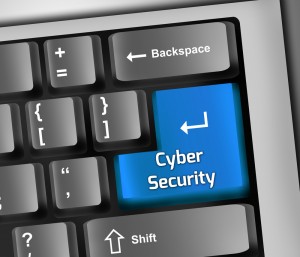 Most companies have invested in the latest technology to bolster defences; however, it’s the simple unintentional social engineering attacks that can significantly impact the company if successful.
Most companies have invested in the latest technology to bolster defences; however, it’s the simple unintentional social engineering attacks that can significantly impact the company if successful.
In the past, the IT department was the main line of defence against cyber threats. But with the increasing threat landscape, it would be better to get everyone in the company involved in fighting cyber-attacks. With proper education and training, every company employee can help mitigate security breaches. Here’s how to build a security culture within your organization.
Help Employees Understand Why Cybersecurity Matters
Many employees know that security is important, but don’t realize the widespread problems a small, seemingly innocent choice could have on the organization’s entire network. Painting a detailed picture of what viable threats and consequences look like will help them understand the magnitude of potential risks. Since most employees don’t feel like they have a stake in company data, make it personal. When the issue of cyberattack feels more real, like having their personal bank accounts hacked, it makes employees care more about being cyber secure.
Make Cybersecurity Training Part of The Onboarding Process
The earlier you get employees to care about cybersecurity, the easier it becomes to develop a security culture within your company. When new hires learn about cybersecurity from the from the first day, it gives them the necessary tools to contribute to keeping the workplace safer for everyone. Training can include the different types of attacks, how to use VPN’s, how to recognize potentially malicious situations, and much more.
Continuous Training and Evaluation
Cybercriminals keep evolving their tactics, and the best way to stay ahead of them is to ensure your employees are aware of the current cybersecurity threats and how to handle them. This can only be achieved through continuous training. The best form of training is “live fire” training, where employees undergo a simulated attack relevant to their job. They are then expected to learn from the attack, including the repercussions it had on the of the organization and their personal lives. Lastly, they are to determine how they could have prevented the attack. To ensure both employees and company systems are up-to-speed, it’s important to do regular evaluations.
Avoid Distributing A Lot of Information at Once
Most people get bored easily sitting through non-stop PowerPoint slides with big terminologies that make them feel like exploding. Considering not all your employees are computer geeks, experts should deliver information in manageable chunks. Start with a few videos or infographics, and don’t forget to include posters and other reminders to deliver an easy-to-understand message. Long information is less likely to be read and retained; so, keep it short, simple, and engaging.
Establish an Internal Communications Strategy
Most employees don’t even know the protocol to follow in case of a security breach. Therefore, give a step-by-step instruction starting from when they notice strange occurrences: whether they should immediately change security settings on their browser, or unplug their machine from the internet, or dial the emergency IT number. That way, they instinctively know what to do if an attack happens. Also, encourage employees to report incidents even if they turn out to be false alarms. Keep the reporting system straightforward.
Appoint Cybersecurity Culture Advocates
There are different security interest levels within an organization, which means, you need to determine the best ways to communicate security information to all employees. Appointing an advocate in every department is a great way of ensuring a sustainable security culture. They keep employees trained and motivated while updating the CISO on the progress being made to ensure workplace security. Cybersecurity culture advocates have to be individuals with a passion for making things secure.
Reward Employees Who Do the Right Thing for Security
There are several forms of incentives that can be used to motivate employees. For instance, provide opportunities for growth within the organization for employees who successfully complete a security awareness program. You can also offer them a chance to earn an advanced degree in cybersecurity. Another option is to reward employees who find malicious emails by sharing with everyone how they helped thwart security issues or offering them cash. On the other hand, remember to empathize with employees who make mistakes.
Transparency
Some cybersecurity tactics may seem invasive. So, be transparent in your communications and let employees know that you are only protecting corporate assets, and not monitoring their personal interests or productivity. Gaining your employees’ trust plays a huge role in getting them on board with cybersecurity.
Use the Right Tools
Employees need access to the right tools to help in cybersecurity. Some of these tools include password managers to help them maintain password security, secure communications platforms to communicate sensitive information, VPN’s like the Avast Secure Line for a secure connection and real privacy, and much more. These tools can be used to assist in cybersecurity without employees having to change their regular behaviours too much. Just ensure that the tools are easy-to-use.
Cyber-attacks keep evolving with each passing day and there’s still a percentage that will go through. However, by implementing these steps on a regular basis, employees can help mitigate these threats. Also, cybersecurity culture takes time, so don’t expect your employees to become experts overnight. But, with the right mindset and process, you’ll get there.